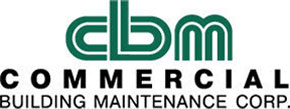As summer bids farewell, it’s time to shift gears and prepare your building for the cooler, crisper days of autumn. This seasonal transition isn’t just about swapping out your wardrobe; it’s also crucial for maintaining your building’s functionality, safety, and comfort. So, let’s dive into the essential after-summer checks that will ensure your building is ready to embrace the fall.
Roof and Gutter Maintenance
Summer storms can leave a mess, especially on your roof and in your gutters. Inspect the roof for any signs of damage like missing shingles, leaks, or worn seals. Cleaning the gutters is essential to prevent blockages that can cause water damage. Make sure all seals and flashing are intact and ready to handle the autumn rains. Addressing these issues now can save you from bigger headaches down the line.
Exterior Inspection and Repairs
The exterior of your building faces the brunt of summer’s heat, storms, and occasional hail. A thorough inspection is crucial. Look for cracks, peeling paint, or any other signs of wear and tear. Repainting and repairing these areas can prevent further damage from autumn’s chill and moisture. Also, check windows and doors for proper sealing to keep the cold air out and the warm air in.
Landscaping and Grounds Maintenance
Your landscaping and grounds also need some TLC to transition smoothly into autumn and winter. Prune any overgrown trees and shrubs to prevent them from damaging your building during fall storms. Mulch flower beds to protect the roots from the coming cold. Prepare your irrigation system for the winter by draining and insulating pipes to prevent freezing. Proper preparation can keep your grounds looking great year-round.
Interior Deep Cleaning
After a summer of activity, it’s time for a deep clean inside. Carpets, windows, and high-touch surfaces all need attention. Clean carpets to remove dust and allergens, and wash windows to let in that beautiful autumn light. Sanitizing high-touch areas can help keep germs at bay as people start spending more time indoors. A clean environment not only looks good but also promotes health and productivity.
Energy Efficiency Audit
With the temperature dropping, it’s a perfect time for an energy efficiency audit. Check insulation levels and consider upgrading if necessary. Sealing drafts around windows and doors can make a significant difference in your heating bills. Look for other ways to improve energy efficiency, like installing programmable thermostats or upgrading to energy-efficient lighting. These steps can help you save money and reduce your environmental footprint.
Safety and Security Checks
Safety and security should never take a backseat. Test smoke detectors and carbon monoxide alarms to ensure they’re working correctly. Inspect fire extinguishers and replace them if they’re expired or damaged. Review your security systems, checking cameras, alarms, and access controls. Ensuring these systems are functioning properly can protect your building and its occupants from potential dangers.
Preparation for Seasonal Transitions
Finally, prepare your building’s occupants for the seasonal change. Remind them to adjust their thermostats for the cooler weather and to keep windows closed to maintain energy efficiency. Update emergency plans to account for autumn-specific risks, such as power outages from storms. Promote seasonal safety by encouraging everyone to dress appropriately for the changing weather and to stay aware of slippery conditions from fallen leaves or early frost.
Conclusion
Post-summer maintenance isn’t just a chore; it’s a necessity for keeping your building in top shape as the seasons change. By focusing on roof and gutter care, exterior repairs, landscaping, interior cleaning, energy efficiency, safety checks, and seasonal preparations, you’re setting your building up for success. Proactive maintenance now can prevent costly repairs and ensure a smooth transition into autumn. So, roll up your sleeves and get started – your building will thank you.

